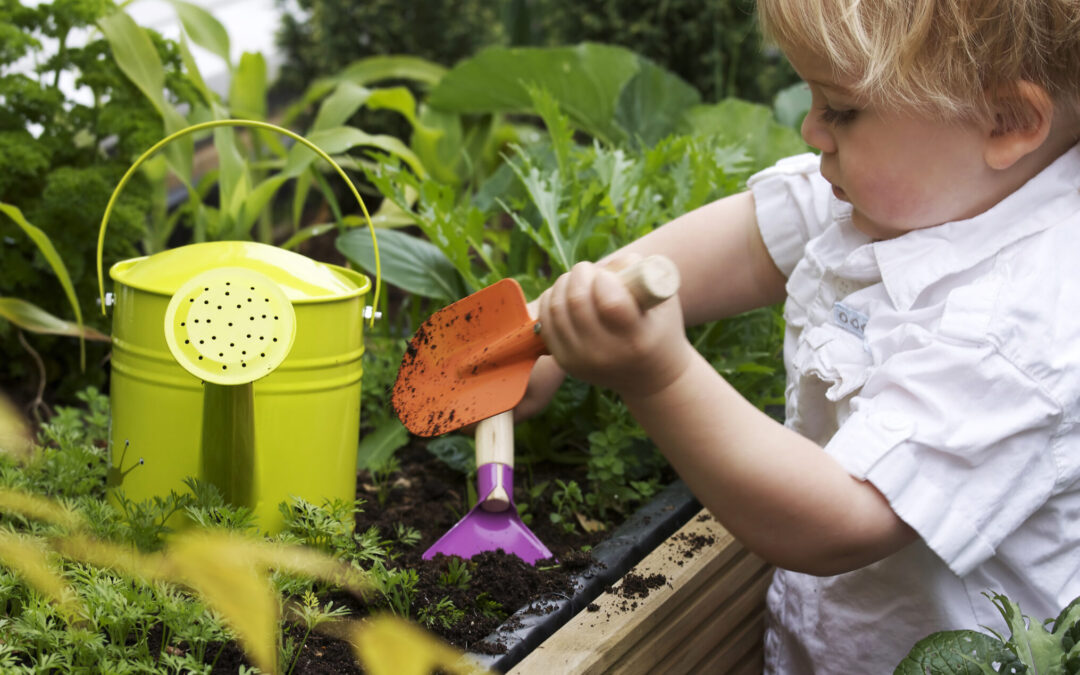At Celebree School, we believe that curiosity is the root of all learning—and nature is the perfect classroom. Whether its squishing mud, watching shadows move, or collecting pebbles, children develop critical STEM skills through natural, sensory-rich play.
By engaging their senses—touch, sound, sight, smell, and movement—children build pathways in the brain that strengthen memory, focus, creativity, and problem-solving. And when you layer STEM thinking into that sensory exploration? That’s where the real magic happens.
Below, we share practical, age-appropriate ways to bring nature-based sensory activities to life for infants through pre-K learners.
Infants (0–18 months): Gentle Sensory Foundations
Infants explore the world through their senses. Nature offers soft sights, calming sounds, and safe tactile experiences that promote bonding and brain development.
Try This:
- Texture Tubs: Fill a shallow bin with soft grass, bark, or smooth (large) stones. Supervise gentle exploration.
- Nature Sound Walks: Take stroller strolls and narrate what you hear—birds, breeze, rustling trees.
- Tummy Time Nature Mats: Place infants outside on a blanket under trees. Let them look up at leaves and light.
- Water Touch Play: Dab water on hands and feet using a sponge for gentle, temperature-based sensory play.
Toddlers (18 months–3 years): Active, Hands-On Discovery
Toddlers learn through movement, repetition, and simple cause and effect. Nature-based sensory play taps into that need with safe, open-ended activities.
Try This:
- Muddy Pouring Station: Set up buckets of water and natural materials (dirt, leaves) for sensory exploration.
- Nature Walk Collecting: Let toddlers fill a small basket with twigs, flowers, or pinecones. Talk about what they find.
- Bubble & Breeze Play: Chase bubbles in the wind. Great for visual tracking and movement.
- Leaf Crayon Rubbings: Use chunky crayons to rub textures of leaves and bark onto paper.
Preschoolers (3–4 years): Storytelling and Sensory Science
At this stage, children begin asking “why” and making connections between ideas. Nature-based sensory play supports language growth, early math, and imaginative play.
Try This:
- Sensory Texture Trails: Walk barefoot across grass, sand, mulch, and puddles (supervised).
- Nature Paintbrushes: Paint with pine needles, feathers, and flower petals to explore texture.
- Sand + Seed Sensory Bins: Bury natural items and encourage kids to sort or identify them.
- Outdoor Story Stones: Use nature-themed rocks as storytelling prompts in the shade of a tree.
Pre-K (4–5 years): Inquiry-Based Exploration
Older preschoolers thrive on experimentation. They’re ready for early STEM concepts like prediction, comparison, and problem-solving. Nature becomes a lab where kids can test ideas and explore change.
Try This:
- Sink or Float Nature Edition: Test twigs, petals, and stones in a bin of water. Ask, “What do you think will happen?”
- Outdoor Texture Mapping: Make rubbings of bark and bricks. Compare textures and patterns.
- Bug & Plant Stations: Use magnifying glasses to examine garden life. Sketch what you see.
- Mini Garden Science: Plant seeds and observe how they grow. Talk about soil, sun, and water.
Keep Nature Play Simple and Child-Led
The best sensory and STEM experiences are unstructured. There’s no right answer—just room to observe, wonder, and play. Follow your child’s lead, ask open-ended questions (“What does that feel like?” “Why do you think that happened?”) and give them time to explore freely.
At Celebree School, we infuse this philosophy into our curriculum every day. Whether in the classroom, on the playground, or during family events, we create space for nature-based learning that helps children thrive across all developmental stages.

